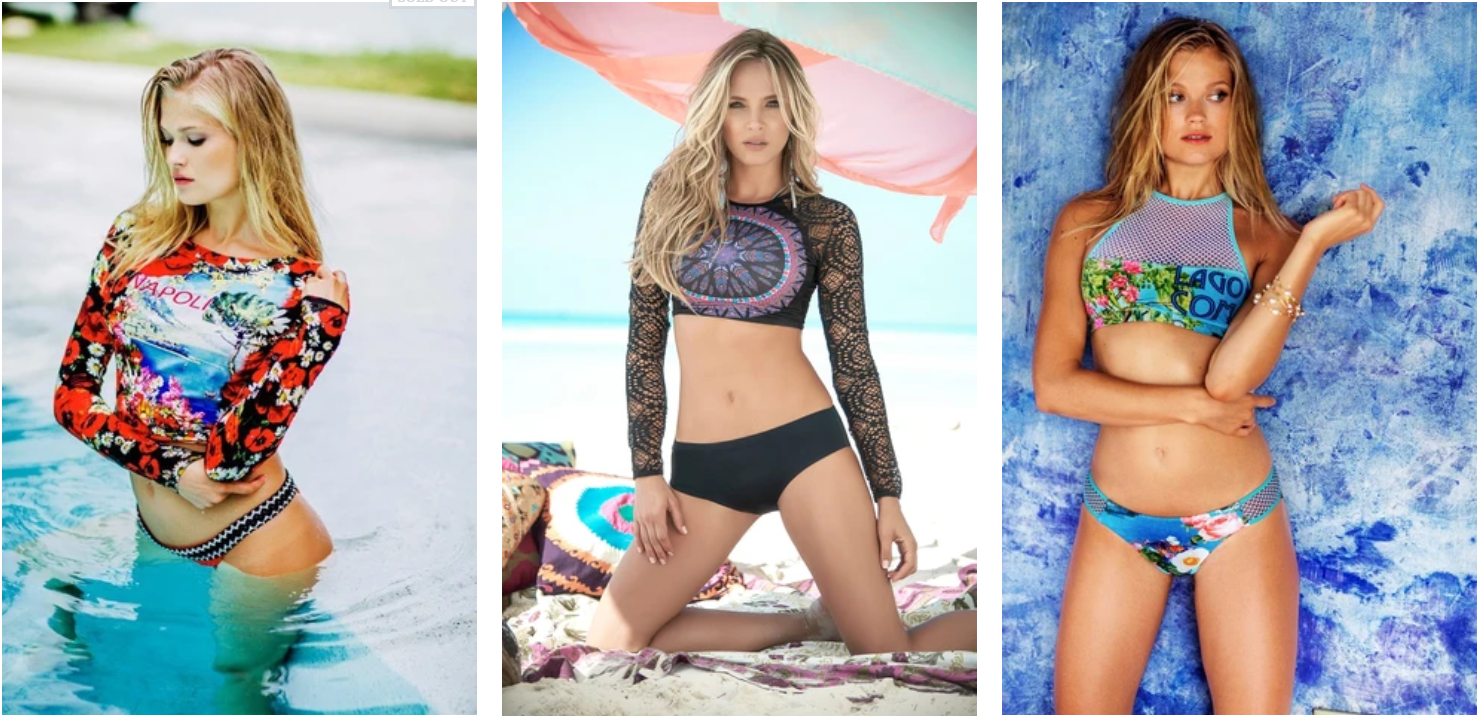History of Women’s competitive Swimwear and Things to Consider When Choosing One Online
Women’s Swimwear and Things to Consider When Choosing One Online
Swimwear, also known as bathing suit or swimsuit, is considered to be any garment we wear for swimming. It is a well-known fact that sea bathing became common among people towards the middle part of the 19th century, this was initiated by the railroads as they told the people then to go relax their bodies from stress at the beach.
Those people that wore swimwear then put on the one that covered virtually the whole body: women’s swimwear materials then were bloomers, black stockings with a dress having short sleeve and skirt while men wore a not-too-flashy sleeveless garment that got to their knee or ankle. The beginning of the 20th century saw men wore just shorts without putting on any form of a shirt to swim.
History of swimwear - WikipediaAfter the end of World War1, the swimwear for women established was looking like a figure-hugging one-piece material, and they stopped wearing the ones they were putting on before. The creativity and innovation didn’t stop there, and they further introduced two-piece swimsuits that got both top and shorts for women around the year 1935 – the bikini was brought to the people later around the year 1947.
The swimwear for women these days don’t sag or inflate in the water; they are of different kinds ranging from one- or two-piece garments to having suits with skirts.
How Did They Come About Competitive Swimwear?
The history of competitive swimwear can be drawn to the first Olympic Games in 1986. Earlier before that year, men and women used to conceal their bodies from hips to shoulders with swimwear designed from wool.
The turning point in the history of competitive swimwear can be dated back to 1928; then, they were able to make a racerback swimsuit created by Speedo. One good thing about this racerback swimsuit was that swimmers were able to freely move their arms.
Inside Speedo - The Speedo StoryBecause of this great improvement in making swimwear, a lot of swimmers wore this racerback swimsuit to win medals at top tournaments within the period of that time – Arne Borg won Olympic gold over 1,500m Freestyle at the Amsterdam Olympic Games in 1928. The Swedish didn’t stop there; he went ahead to surpass a lot of world records in a few years later. Another excellent example of a swimmer that wore a racerback swimwear to achieve greatness was Clare Dennis. The Australian won 200m Breaststroke gold in a world record.
Arne BORG - Olympic Swimming | Sweden - Olympic.orgThe bare-chested swimming done by men today can be traced back to the 1936 Olympics. The sense behind it was using a reduced material to the lowest form as possible to design new swim shorts.
The improvement and development never stopped there; they replaced the material used in making swimwear to nylon or a mixture of nylon or lycra. It is a good idea because fabric from nylon is very resistant to water.
Nylon - The science of synthetic textiles - Explain that StuffThe Essential Information You Need in Choosing the Right Swimwear to Buy
If you don’t know how to choose a swimsuit that emphasizes the advantages and hides the flaws of the figure, then you will negate all the efforts that you spent on keeping yourself in good shape. In addition to separate and fused, there are products suitable for a certain figure, with which you can look unique.
A lot of individuals buy swimwear they later don’t wear because they don’t know the designs and colors that poise their body shape. Having immense knowledge of the shape of your body is key in choosing and buying the right swimsuit. We will be explaining somebody shapes, so you learn and find yours below:
- Inverted Triangle: The hips are less extensive than the shoulders. If this is your body shape, you can go for swimsuit that has wide straps, patterns, or prints that draw the eyes down, shirts, side stripes, etc.
- Rectangle: Not with a well-defined waist but width of the hip and shoulder is balanced. Go for swimwear that has drop-yoke waist, princess seams, lingerie straps, diagonal lines and prints, etc. in terms of color, don’t pick the one with solid colors.
- Triangle: Shoulders and/or bust are less wide than the hips. Go for swimsuits with front zipper, darker or solid color at the bottom, and an empire-style waist.
- Circle: Waist appears to be bigger than bust and hips. Go for swimsuits with tummy control panel, diagonal prints, high back, princess seams, and vertical color blocks.
Good luck finding the perfect competitive swimsuit for your activity!
Frequently Asked Questions
- What historical developments have shaped women’s competitive swimwear, and what should be considered when purchasing one online?
- Historical developments include technological advancements and evolving fashion trends. Considerations for online purchases include accurate sizing, fabric quality, and performance features.

